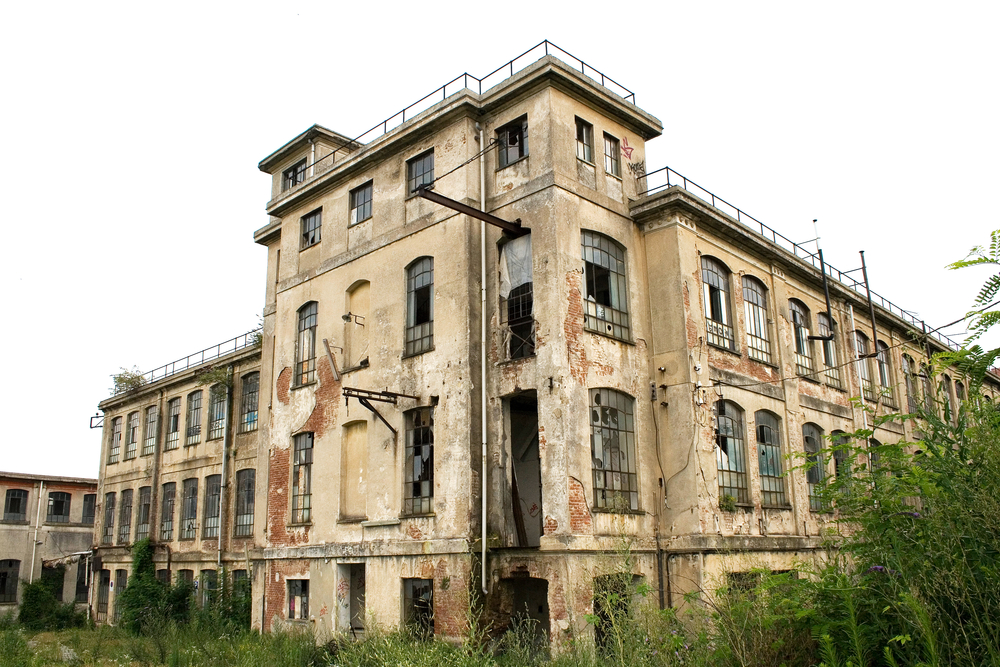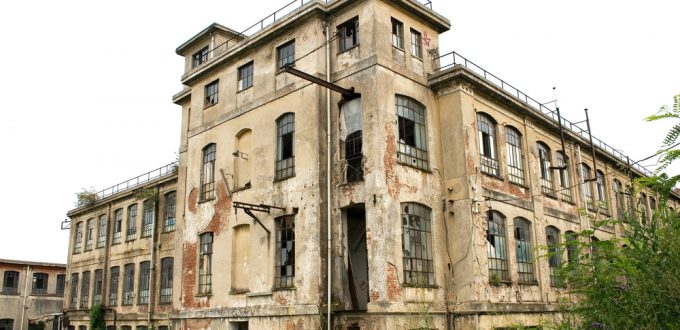
5 REASONS WHY PURCHASING BUSINESS INTERRUPTION INSURANCE HAS BECOME A TOP CONSIDERATION FOR CORPORATIONS IN ASIA-PACIFIC
Risk barometers, risk reports and global risk management surveys all indicate Business Interruption as one of the main risks companies face today.
During Swiss Re Corporate Solutions ‘award winning’ business interruption masterclass, we’ve had the opportunity to present to over 400 risk professionals and brokers. What is clear from these masterclasses, is that Business Interruption insurance continues to be a challenge and source of frustration for even the most seasoned risk professional.
To help alleviate this frustration, we wanted to publish a series of articles to help risk professionals overcome some of the hurdles associated with Business Interruption insurance.
In this first article we look at the reasons why Business Interruption has become a top risk concern for corporations. Naturally we welcome your comments and feedback on this article and any questions you have about business interruption insurance.
So, why has the risk of business interruption climbed to the top of the list in all manner of recent surveys about risk management and insurance?
1. The cost of the loss
 In the wake of a number of recent large losses following major fires and explosions, floods, storms and earthquakes where BI has been a major cause of loss, it is clear to see why concerns surrounding BI policies are paramount. Typically the BI proportion of a property claim will account for the majority of the loss, well over 50% of the incurred loss, and it is now not uncommon to see single risk claims exceed USD 100 million – in some cases even approaching the USD 1 billion mark.
In the wake of a number of recent large losses following major fires and explosions, floods, storms and earthquakes where BI has been a major cause of loss, it is clear to see why concerns surrounding BI policies are paramount. Typically the BI proportion of a property claim will account for the majority of the loss, well over 50% of the incurred loss, and it is now not uncommon to see single risk claims exceed USD 100 million – in some cases even approaching the USD 1 billion mark.
This trend we see, of increasing BI losses, is due to factors such as more complex global supply chains and highly specialized production equipment, interdependency risks and just in time inventory. This is further exemplified with emerging risks such as disruptive technology and the Internet of Things (IoT).
2. Interdependencies on the rise
Individual companies and whole industries are now interconnected as a result of globalization, technological and societal developments and a more competitive business environment. In short, business structures and supply chains are more complex today than ever before. This complexity is growing as companies and sectors become reliant on their suppliers for key components or ingredients, services and utilities. We see this as one of the main drivers for increased Business Interruption losses and why it is the top risk for many organizations globally.
Take for example the automotive industry. Typically, a single car has about 30,000 parts and a major car manufacturer may have to manage thousands of different suppliers. A missed delivery of a single component might result in a significant business interruption loss amounting to many millions of dollars. Most sectors have interdependencies; either from a company within their own group, a third party supplier or from public utilities. This is especially true of the semiconductor, pharmaceutical and power industries. For example, in the power sector many companies are dependent on supplies from a neighbouring refinery or petrochemical plant and if there is a disruption, which impacts supply, it would have a dominos or knock on effect.

Ever tighter interdependencies have been exasperated as corporations look to maximize efficiencies by adopting lean manufacturing processes and just in time practices, which are commonplace within highly integrated local and international supply chains. This obviously introduces a heightened business interruption risk – e
videnced in May 2018 when Ford Motor Company announced that production of its F-150 and Super Duty Pick
Further, many organisations have relocated manufacturing and production facilities abroad. For example in the manufacturing industry there was a shift to move to China in the 1980s and more recently to South East Asia. These regions are prone to natcat events and suffer from a large insurance protection gap, however, attitudes are now maturing rapidly as corporations invest in good risk management practices.-Up trucks had ground to a standstill at three assembly plants in the USA within a week, as the result of a fire at a magnesium die casting supplier’s factory in Michigan. And it’s not just Ford. GM, Fiat Chrysler and Mercedes are also reportedly affected. The early effects of such an event are usually amplified by current trends of holding just-in-time inventories.
The relocation of facilities may also result in a concentration risk or accumulation exposure for corporations. This issue was brought to the fore during recent man-made and natural catastrophes in Asia including the 2011 Tohoku Earthquake and subsequent tsunami, Thai floods and the fires and explosions in China in 2013 and 2016. For example, The Thai floods impacted several large manufacturing estates resulting in companies in the EU and US suffering losses when suppliers in Thailand were unable to supply. A similar situation occurred when a fire at the SK Hynix factory in China – a plant that produced something between a tenth and a sixth of the world’s supply of memory chips – disrupted the global electronics supply.
3. Increasing losses from natural catastrophe (natcat) events
Typically, earthquakes, floods hurricanes and tornadoes are what’s referred to as natcats. And, storm and flood losses dominate causation in Asia. Man-made events that frequently cause Business Interruption losses are fire and explosion, machinery breakdown, power outage and srolling blackouts as well as terrorism and human error. However, natcat events usually lead to wide spread damage as was seen in the Thai floods, the Tohoku earthquake in Japan and the Christchurch earthquakes in New Zealand.
One standout observation from the latest sigma report is that while the number of natcat events has reduced since 2005, the global total economic losses from these events has effectively doubled from USD 166 billion in 2016 to USD 330 billion in 2017 (please see illustrations in the source link) and the protection gap between insured and uninsured losses continues to widen.
Economic losses from disaster events in Asia were estimated at USD 31 billion in 2017, the majority resulting from flood events. For example, in China, heavy rains caused the Yangtze River to flood. In Oceania significant losses came from Cyclone Debbie in March/April which brought wind, wind-driven rainwater and storm surge damage to southeast Queensland and northeast New South Wales.
 From a risk management and insurance perspective the wide spread nature of natcats creates challenges, even with the best business continuity plans in place. For example, during the 2011 Thai floods and Japanese earthquakes it was relatively straightforward to quantify and settle property claims, but during these two events infrastructure was damaged, roads, airports and ports as well as power and utilities, which prevented not only supplies from reaching their destination, but also the movement of people. The result was that business recovery efforts were substantially delayed. Also, as is seen post most natcat events, there was a major demand surge for construction services and materials as whole industries looked to reinstate their properties, which again resulted in elongated business interruption and financial consequences for businesses. Often, well beyond the selected Maximum Indemnity Period.
From a risk management and insurance perspective the wide spread nature of natcats creates challenges, even with the best business continuity plans in place. For example, during the 2011 Thai floods and Japanese earthquakes it was relatively straightforward to quantify and settle property claims, but during these two events infrastructure was damaged, roads, airports and ports as well as power and utilities, which prevented not only supplies from reaching their destination, but also the movement of people. The result was that business recovery efforts were substantially delayed. Also, as is seen post most natcat events, there was a major demand surge for construction services and materials as whole industries looked to reinstate their properties, which again resulted in elongated business interruption and financial consequences for businesses. Often, well beyond the selected Maximum Indemnity Period.
4. Increasing costs and complexity of production equipment
All businesses rely on some form of equipment and machinery, which may need to be replaced or repaired following a major event, whether man-made or natcat in origin. And most production facilities have some form of critical equipment. If machines are damaged, OEM’s lead times become crucial as failed production losses mount. These lead times for repair or replacement tend to be particularly long in sectors that use specialist or heavy equipment, such as the petrochemical, automotive, semiconductor and power sectors.
For example, large power transformers are often bespoke and not fully interchangeable. Spare transformers are not commonly available, although manufacturers have begun to offer multi-purpose equipment suitable for various plants of a power company. While the property damage loss potential of transformers is relatively small at up to USD 7 million, the resulting business interruption losses may be much higher, as repair or replacement periods may take up to 18 months, due to the limited number of manufacturers worldwide.
And the risk of lengthy business interruption periods is not just restricted to the power industry. In recent years increasingly sophisticated technologies have enabled more complicated systems and equipment – many being purpose-built items with protracted lead times of 12 months or more.
5. Supply bottlenecks
 Many of the reasons that Business Interruption Insurance has become a key consideration today, is due to the interconnected nature of risks. This is certainly true when it comes to the supply of critical components or ingredients following a serious loss. With many production facilities now located in the same industrial park or geographic area, when an event occurs, there follows a spike in demand for materials, spares and machinery, as similar businesses, with similar needs look to reinstate their production facilities and operations as quickly as possible. Business continuity planning, involving suppliers of key equipment is therefore essential.
Many of the reasons that Business Interruption Insurance has become a key consideration today, is due to the interconnected nature of risks. This is certainly true when it comes to the supply of critical components or ingredients following a serious loss. With many production facilities now located in the same industrial park or geographic area, when an event occurs, there follows a spike in demand for materials, spares and machinery, as similar businesses, with similar needs look to reinstate their production facilities and operations as quickly as possible. Business continuity planning, involving suppliers of key equipment is therefore essential.
Critical components can often be in the hands of a small number of manufacturers worldwide. With demand surge from impacted corporations, the shortage of raw materials and availability of services can become acutely apparent and waiting periods can easily reach 24 months. Similarly, the limited production capacity and shortage of raw materials from just a handful of suppliers can inevitably lead to longer lead times and result in increased business interruption exposures.
As well as the main drivers mentioned in this article we also see the following factors as drivers for why Business Interruption has become a key risk for many organisations:
source: Swiss Re Corporate Solutions











